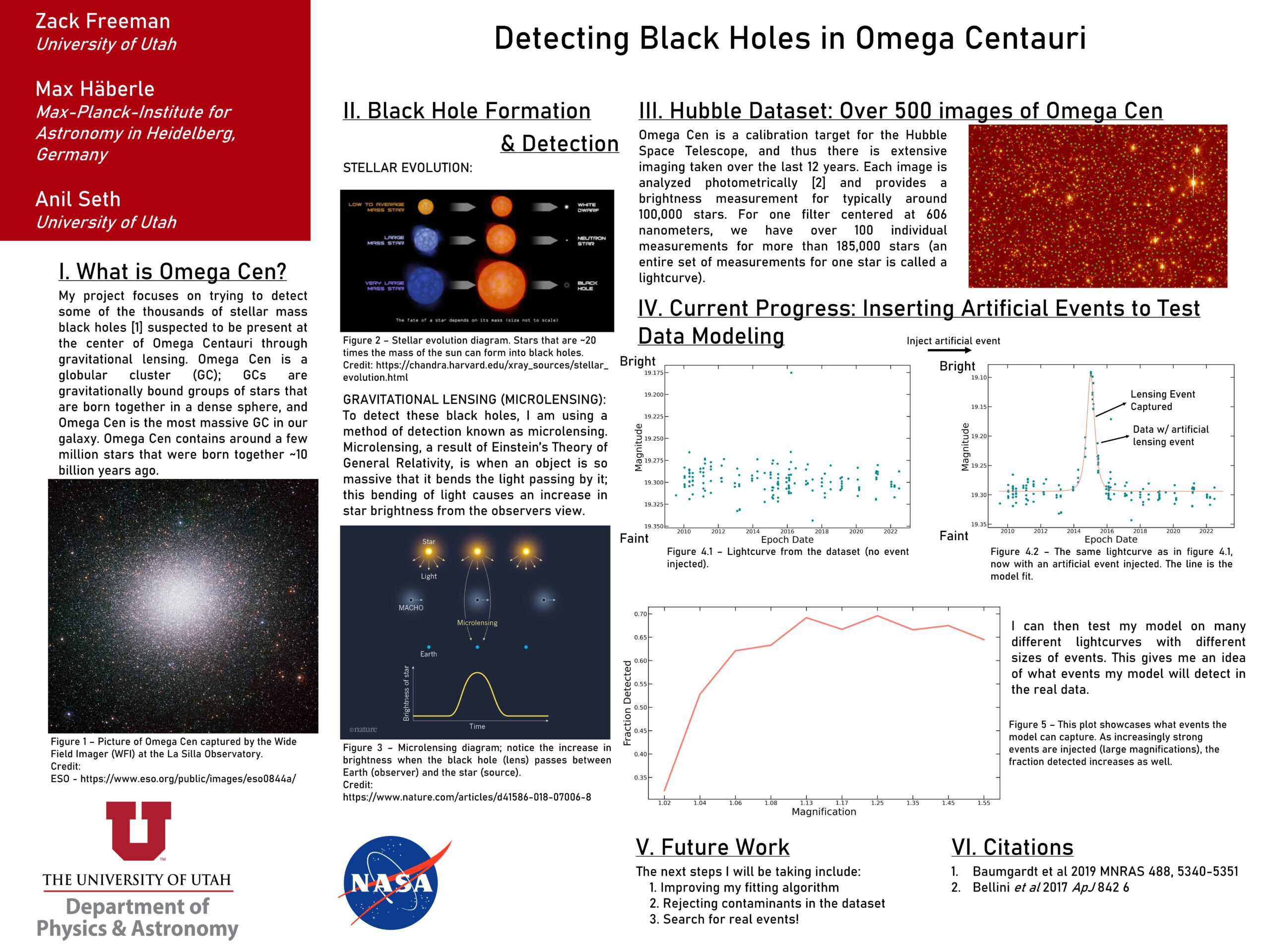Presenter Name: Zack Freeman
Description
My project focuses on trying to detect some of the thousands of stellar mass black holes suspected to be present at the center of Omega Centauri through gravitational lensing. Omega Cen is the most massive globular cluster in the Milky Way, therefore making it a good candidate for detection of stellar mass black holes. Past studies have shown the need for a single Intermediate Mass Black Hole (IMBH) at the center of this cluster (e.g. Noyola et al., 2010), although more recent studies have disputed this claim. Instead, Baumgardt et al. (2019) favors the presence of a cluster of stellar mass black holes near the center of Omega Cen; so far, there is no direct evidence for even a single black hole.
Omega Cen is a calibration target for the Hubble Space Telescope, and thus there is extensive imaging taken over the last 12 years. Within a single filter centered at 606 nanometers, this dataset provides about 160,000 stars with more than 100 measurements (an entire set of measurements for one star is called a lightcurve). Within these lightcurves, I am searching for a microlensing event caused by a stellar mass black hole. When a black hole (the lens) is lined up between us (the observer) and a star (the source), it causes an increase in the star's brightness; this is the microlensing event I am searching for. My work this far has been modeling the lightcurves, including testing using synthetic microlensing events that I inserted into the data. I present a first search for potential events in this data.
University / Institution: University of Utah
Type: Poster
Format: In Person
Presentation #D65
SESSION D (3:30-5:00PM)
Area of Research: Science & Technology
Email: u1190843@umail.utah.edu
Faculty Mentor: Anil Seth

